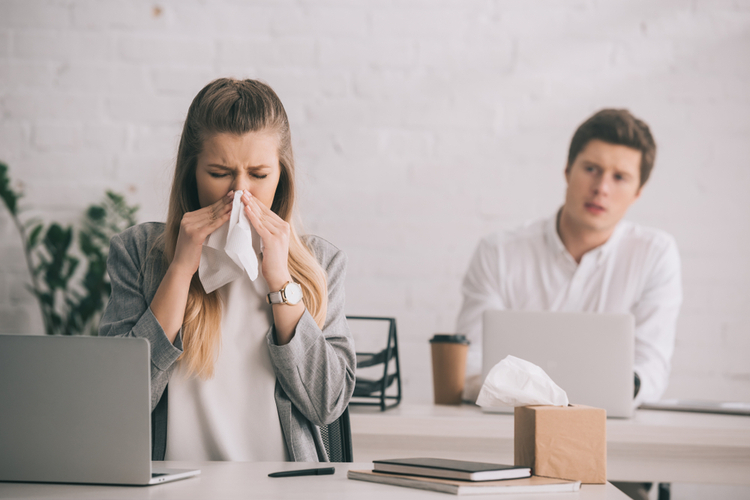Labor Day Thoughts: Workplace Stress and How it Affects Your Health
Happy Labor Day! Having a job and putting in a good day’s work can provide a sense of purpose, instill pride, and make us feel good about ourselves. The workplace, however, can also be a place filled with tension, resulting in anxiety and stress that does anything but make us feel good. Workplace stress is, in fact, a major contributor to emotional and physical ill-health in our society. It can also directly lead to injury.
Workplace stress is, according to the US Institute for Occupational Safety and Health, the emotional and physical responses that happen when job requirements do not match up with the capabilities, needs, and resources of the employee. In a recent survey, forty percent of employees rated their job as being extremely stressful. This and other research has identified workplace stress as most likely to affect people who have little to no job control. These include casual workers, younger workers, people in low-skilled jobs, and women.
- Workplace Stress Causes
- Employee Health Effects
- Recognizing the Signs and Symptoms
- Stress Reduction Techniques
- Work Environment
Workplace Stress Causes
Arguably, work is the biggest cause of stress in the western world today. The pace of change in the way we work has never been as great. People have to cope with new information technology, longer working hours, and short-term contracts. A job is no longer for life. As job insecurity increases, people are more likely to remain in a job that is perhaps safe but not necessarily suited to them.
There are two categories of workplace stressors: physical and psychological.
Physical stressors include the work environment, such as the level of lighting, noise level, the layout of the office space or factory, and the ergonomics of your immediate workplace, such as your chair or desk.
Psychological stressors may be such things as unreasonable demands from a supervisor, long work hours, bullying, harassment, lack of job control, and the fear of job loss.
Employee Health Effects
There are three stages researchers have identified that a person goes through in response to stress. This is known as the General Adaptation Syndrome. In Stage One, the person experiences alarm, which immediately triggers a complex cascade of biochemical events, and the stress hormones adrenaline and cortisol are dumped into the bloodstream.

In Stage Two, the body’s heightened physical responses create an increase in activity so that the person either leaves the situation or stays and attempts to cope by resisting or adapting to the stressful event.
Stage Three of the stress response is exhaustion. By this stage, the person has been reacting to the stressful event for so long that they are overwhelmed, their energy is finally depleted, and the result is exhaustion. It is then that people become vulnerable to the health problems associated with stress.
Recognizing the Signs and Symptoms
Workplace stress can manifest itself in many ways, so recognizing the signs is an important first step in dealing with the problem. Generally, the symptoms will become apparent in five different ways: emotional, mental, physical, behavioral, and health problems.

The emotional symptoms of stress include anxiety, nervousness, worry, anger, guilt, moodiness, loss of humor, loss of work enjoyment, and lack of confidence. The physical effects of stress on the body include feeling restless, uptight, or jumpy, high blood pressure, muscle tension in the neck and back, headaches, poor sleep, fatigue, lack of energy, dry mouth, teeth grinding, loss of appetite, and stomach upset.
Behavioral symptoms of stress are manifested by such things as impatience, impulsiveness, hyperactivity, shortness of temper, aggressiveness, becoming accident prone, abuse of alcohol and prescription or illegal drugs, and situational avoidance.
Mental symptoms of workplace stress include frequent lapses in memory, constant negative thinking, being self-critical, very rigid attitudes, and difficulty concentrating. Health problems include a higher than usual susceptibility to colds and flu, migraines, irritable bowel syndrome, ulcers, stomach disorders, angina, skin rashes, and heart attack.
A growing body of evidence has identified a relationship between workplace stress and cardiovascular disease. Many of the preluding factors leading to heart attacks, such as obesity, high cholesterol levels, and high blood pressure, are linked to workplace stress. Workplace stress has also been found to increase a person’s risk of developing Type 2 Diabetes.
Stress also negatively affects the employer. There is likely to be a reduced level of workplace safety, loss of productivity, and increased sick hours.
Stress Reduction Techniques
Here are two ways to reduce stress that can help employees cope with tough work situations.
Relaxation Strategy
Consciously relaxing in a stressful situation will help your body counter the physical effects of the fight or flight syndrome. Yet, waiting for a stressful event is not the best time to begin learning relaxation. It is far better to set aside a few minutes a day to practice. Once you have learned it, you will be able to let go of your tension in virtually any situation.

Here is the technique you can practice for a couple of minutes every two to three hours to keep stress at bay:
- Sit in a comfortable chair.
- Relax, and close your eyes.
- Focus on the rhythm of your breathing.
- Let your whole body become loose and limp.
- Imagine a relaxing scene.
Picture Yourself Coping
Negativity feeds off itself. So, if you are always thinking the worst, then you may actually talk yourself into more than your fair share of bad experiences. You can use visualization to help you cope with a stressful workplace situation. Here is how to do it:
- Sit in a comfortable chair.
- Vividly imagine the situation you are anxious about.
- Feel your anxiety rising.
- Now picture yourself coping with the situation.
- Imagine that you are using a breathing technique and talking to yourself in a calm, reassuring way.
- Use coping strategies such as, “This is just anxiety; it will soon pass,” “I know it will be okay,” “This is not as bad as I think,” etc.
- When you feel your anxiety decrease, open your eyes.
Work Environment
The ultimate responsibility for reducing workplace stressors lies with the employee. Interventions such as redesigning the work environment, providing more breaks, increasing employees in the decision-making process, and increasing resources and time for job completion will all help to reduce employee stress levels. Creating an environment where judgment-free, open communication is encouraged will also help to create a stress-free workplace.
Is workplace stress getting to you? Try the relaxation technique above, and see if your work might be the culprit of some of your health issues.








